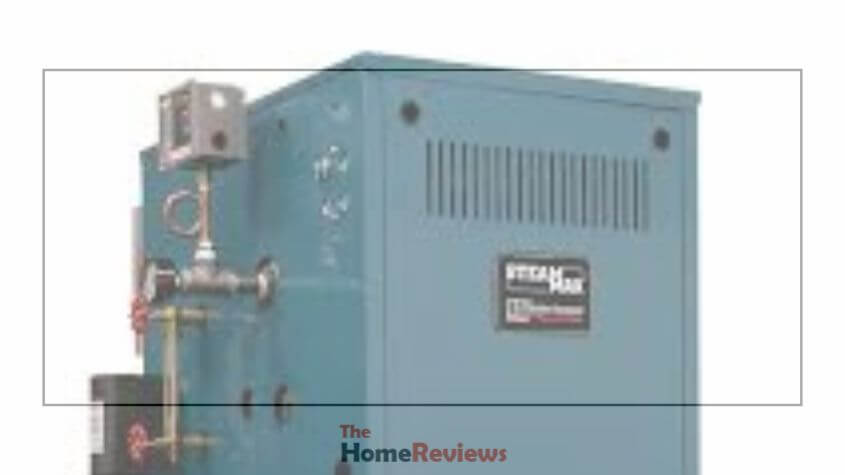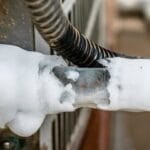Burnham Series 2 gas boiler troubleshooting can be done by checking for common issues such as low/high boiler pressure, power cuts, gas supply issues, faulty pilot lights, frozen condensate pipes, or faulty internal components. Reasons for a boiler not igniting include insufficient pressure, burner blockage, faulty valves, or frozen pipes, Some issues can be resolved by the homeowner, while others may require professional assistance.

Common Issues With Burnham Series 2 Gas Boiler
The Burnham Series 2 Gas Boiler may encounter issues like low boiler pressure, faulty pilot light, gas supply problems, or internal component malfunctions. These problems can impact the boiler’s performance and heating capabilities and may require professional troubleshooting for resolution.
Low Or High Boiler Pressure
One common issue with the Burnham Series 2 Gas Boiler is low or high boiler pressure. Low boiler pressure can prevent the boiler from heating the house properly, while high boiler pressure can cause damage to the system. To troubleshoot this issue, you can start by checking the pressure gauge on the boiler. If the pressure is too low, you can try to repressurize the boiler by opening the filling loop and allowing water to enter the system until the pressure reaches the recommended level. On the other hand, if the pressure is too high, you can bleed the radiators to reduce the pressure. If the problem persists, it is best to contact a professional technician to inspect and fix the issue.
Faulty Pilot Light
Another common issue with the Burnham Series 2 Gas Boiler is a faulty pilot light. The pilot light is responsible for igniting the main burner and starting the heating process. If the pilot light goes out or keeps flickering, it can prevent the boiler from heating the house. To troubleshoot this issue, you can try relighting the pilot light following the manufacturer’s instructions. If the pilot light continues to go out or if it is not staying lit, there may be an issue with the thermocouple or gas supply. In such cases, it is recommended to call a professional technician to diagnose and fix the problem.
Frozen Condensate Pipe
A frozen condensate pipe is another common issue that can affect the Burnham Series 2 Gas Boiler. The condensate pipe is responsible for draining the condensation produced by the boiler. However, during extremely cold weather, the condensate pipe can freeze, causing a blockage and preventing the boiler from functioning properly. To troubleshoot this issue, you can try thawing the pipe using warm water or a hot water bottle. However, it is important to avoid using boiling water or heat sources directly on the pipe, as this can cause damage. If the pipe remains frozen or if it keeps freezing, it is best to seek professional help to prevent any further damage to the system.
Faulty Internal Components
Finally, faulty internal components can also cause issues with the Burnham Series 2 Gas Boiler. Over time, components like the pressure-reducing valve, fan centre relay, or low water cutoff relay may wear out or malfunction, leading to problems with the boiler’s heating performance. To troubleshoot this issue, it is recommended to contact a professional technician who can inspect and diagnose the specific faulty component. They can then repair or replace the component as necessary to restore the boiler’s functionality.
In conclusion, the Burnham Series 2 Gas Boiler may experience common issues such as low or high boiler pressure, a faulty pilot light, a frozen condensate pipe, or faulty internal components. These issues can affect the boiler’s heating performance and may require professional troubleshooting and repairs. Regular maintenance and professional service can help prevent these issues and ensure the optimal functioning of your Burnham Series 2 Gas Boiler.
Troubleshooting Methods
When the boiler encounters issues, resetting the spill switch can often resolve the problem. Locate the spill switch and follow the manufacturer’s instructions for resetting it.
Ensure the thermostat is set to the desired temperature. Test its functionality by adjusting the settings and checking if the boiler responds accordingly.
Check the pilot light for any signs of damage or malfunction. Make sure the flame is steady, blue, and not flickering. If needed, clean or relight the pilot light.
Inspect the vent damper for any blockages or obstructions. Make sure it opens and closes properly during boiler operation. Clean the vent damper if necessary to ensure proper ventilation.
Expert Fixes
Have trouble with your Burnham Series 2 gas boiler? Don’t worry, our expert team is here to help. In this section, we’ll provide you with some tried-and-tested solutions to common issues that homeowners may encounter with their boilers. Whether you need to clean the burner, inspect the pressure regulator valve, or learn about boiler maintenance and service plans, our expert fixes will get your boiler back up and running in no time.
Cleaning The Burner
If your Burnham Series 2 gas boiler is not functioning properly, it may be due to a dirty burner. Over time, dirt, dust, and debris can accumulate on the burner, affecting its performance. To clean the burner, follow these simple steps:
- Turn off the power and fuel supply to the boiler.
- Remove the access panel to gain access to the burner.
- Using a soft brush or cloth, gently remove any dirt or debris from the burner.
- Inspect the burner for any signs of damage or wear. If necessary, replace the burner.
- Reassemble the burner and secure the access panel.
- Turn on the power and fuel supply to the boiler.
Inspecting Pressure Regulator Valve
The pressure regulator valve is an important component of your Burnham Series 2 gas boiler. It regulates the flow of gas into the boiler, ensuring that the pressure remains at a safe and efficient level. If you’re experiencing issues with your boiler, it’s essential to inspect the pressure regulator valve. Here’s how:
- Turn off the power and fuel supply to the boiler.
- Locate the pressure regulator valve, usually located near the gas supply line.
- Inspect the valve for any signs of damage or leakage.
- If you notice any issues, such as loose fittings or damaged seals, contact a professional for repairs or replacement.
- Reassemble the valve and ensure it is properly secured.
- Turn on the power and fuel supply to the boiler.
Boiler Maintenance And Service Plans
Preventive maintenance and regular servicing are crucial to ensuring the long-term performance and efficiency of your Burnham Series 2 gas boiler. By signing up for a boiler maintenance and service plan, you can save yourself from costly repairs and unexpected breakdowns.
Boiler maintenance and service plans typically include:
- Annual inspections and tune-ups
- Cleaning and servicing of the boiler components
- Checking for any potential issues or safety hazards
- Priority service and discounted repairs
By investing in a boiler maintenance and service plan, you can have peace of mind knowing that your Burnham Series 2 gas boiler is in good hands and will continue to provide efficient heating for years to come.
Diy Solutions
When facing issues with your Burnham Series 2 gas boiler, DIY solutions can often help resolve common problems. Understanding how to troubleshoot your boiler can save time and money. Below are some DIY solutions to address common boiler issues.
Locating The Boiler Reset Button
Locating the boiler reset button is crucial for troubleshooting your Burnham Series 2 gas boiler. The reset button is typically located near the burner or on the control panel.
Identifying The Pressure-Reducing Valve
Identifying the pressure-reducing valve in your Burnham Series 2 gas boiler is essential for maintaining proper pressure levels. The valve is usually located near the boiler inlet or on the water supply line.
Signs For Professional Service
Recognizing the signs that indicate the necessity of professional service for your Burnham Series 2 gas boiler is crucial for maintaining its efficiency and safety. The following are key indicators that should prompt you to seek professional assistance:
Last Professional Service Date
If you are unable to recall or document the date of your boiler’s last professional service, it’s advisable to schedule one. Regular maintenance is vital to ensuring the optimal performance and longevity of your boiler. It also helps in identifying and addressing potential issues before they escalate.
Draft Testing
Conducting draft testing enables the assessment of the airflow in the venting system and ensures proper ventilation, thereby preventing the accumulation of harmful gases in the living space. Any anomalies in draft readings signify the need for professional intervention to rectify ventilation issues and maintain the safety of the boiler.
Combustion Analysis
Performing a combustion analysis allows for the evaluation of the combustion process, ensuring it is operating at peak efficiency while also verifying that harmful emissions are within safe limits. An irregular combustion analysis could indicate underlying problems that require prompt professional attention to prevent potential hazards and maintain the boiler’s longevity.
Determining Boiler Life Expectancy
A boiler’s life expectancy is influenced by various factors. Understanding when to replace the boiler is crucial for ensuring optimal performance and safety.
Factors Influencing Life Span
Burnham Series 2 gas boilers have an average life expectancy of 15-20 years, but this can vary based on several factors, including:
- Maintenance frequency and quality
- Water quality and pH levels
- Usage patterns and demand
- Installation and sizing adequacy
- Environmental conditions and ventilation
When To Replace The Boiler
Considering a new boiler is crucial when encountering these warning signs:
- Constant breakdowns or inefficiency despite regular maintenance
- Visible signs of corrosion or leaks
- Boiler age exceeding 15-20 years
- Rising energy costs due to inefficient performance
External Factors Affecting Boiler Ignition
When it comes to troubleshooting a Burnham Series 2 gas boiler, understanding the external factors that can affect boiler ignition is crucial. Ignition issues can be caused by a variety of external factors that can disrupt the normal operation of the boiler. In this section, we will explore two common external factors: leaking regulator valve and incremental pressure buildup.
Leaking Regulator Valve
A leaking regulator valve can cause ignition problems in a Burnham Series 2 gas boiler. The regulator valve is responsible for regulating the pressure of gas flowing into the boiler. If the valve is leaking, it can result in inconsistent gas pressure, which can affect the boiler’s ability to ignite. Additionally, a leaking regulator valve can lead to a dangerous buildup of gas, posing a serious safety hazard to the household.
Incremental Pressure Buildup
Another external factor that can affect boiler ignition is incremental pressure buildup. Over time, the pressure inside the boiler can gradually increase due to various reasons such as blockage in the burner, faulty valves, or frozen pipes. This buildup in pressure can make it difficult for the boiler to ignite properly. If the pressure becomes too high, it can trigger the boiler’s safety mechanisms, causing it to shut down and fail to ignite.
To troubleshoot ignition issues related to external factors, it is important to inspect and address any leaking regulator valves promptly. A professional boiler technician should be contacted to replace the faulty valve and ensure proper pressure regulation. Additionally, regular maintenance checks should be scheduled to prevent incremental pressure buildup. These checks can include inspecting and cleaning the burner, valves, and pipes, as well as ensuring proper ventilation.
Additional Resources
When troubleshooting your Burnham Series 2 gas boiler, additional resources, such as online tutorials and professional HVAC service videos, can provide invaluable guidance. Look to reliable sources on YouTube and websites like DoItYourself. com for step-by-step instructions, ensuring a thorough understanding of the necessary tasks.
Regular maintenance and expert advice can help address common issues and keep your boiler running efficiently.
Online Tutorials And Guides
For visual, step-by-step troubleshooting, online tutorials and guides are invaluable resources. Platforms like YouTube offer in-depth videos by professionals like Mikey Pipes from Pipe Doctor Plumbing & Heating.
Professional Consultation
When DIY methods fall short, seeking professional consultation is crucial. Experienced professionals can provide hands-on assistance tailored to your specific Burnham Series 2 gas boiler issues.
Frequently Asked Questions
Why Is My Gas Boiler Not Firing?
If your gas boiler is not firing, it could be due to low pressure, a faulty pilot light, or frozen pipes. It’s important to check for these issues and consider calling an engineer if needed. Regular maintenance can also help prevent such problems.
Where Is The Reset Button On A Burnham Boiler?
The reset button on a Burnham boiler is usually located near the burner. Look for a small red button on the front of the boiler.
What Is The Life Expectancy Of A Burnham Gas Boiler?
The life expectancy of a Burnham gas boiler is typically around 15 to 20 years.
Why Is My Steam Boiler Not Firing Up?
There can be various reasons why your steam boiler is not firing up, such as insufficient pressure, blockages in the burner, faulty valves, or frozen pipes. Some issues can be resolved on your own, while others may require calling in an engineer for assistance.
How Can I Troubleshoot A Burnham Gas Boiler?
To troubleshoot a Burnham gas boiler, check for low pressure, gas supply issues, or faulty components.
Conclusion
In troubleshooting a Burnham Series 2 gas boiler, it is important to address common issues such as low boiler pressure, faulty pilot lights, and frozen condensate pipes. By following the steps outlined in this blog post, you can identify and resolve these problems on your own or consult a professional if necessary.
Keeping your boiler in optimal condition ensures efficient heating for your home. Remember to regularly check and maintain your boiler to prevent any further complications.





